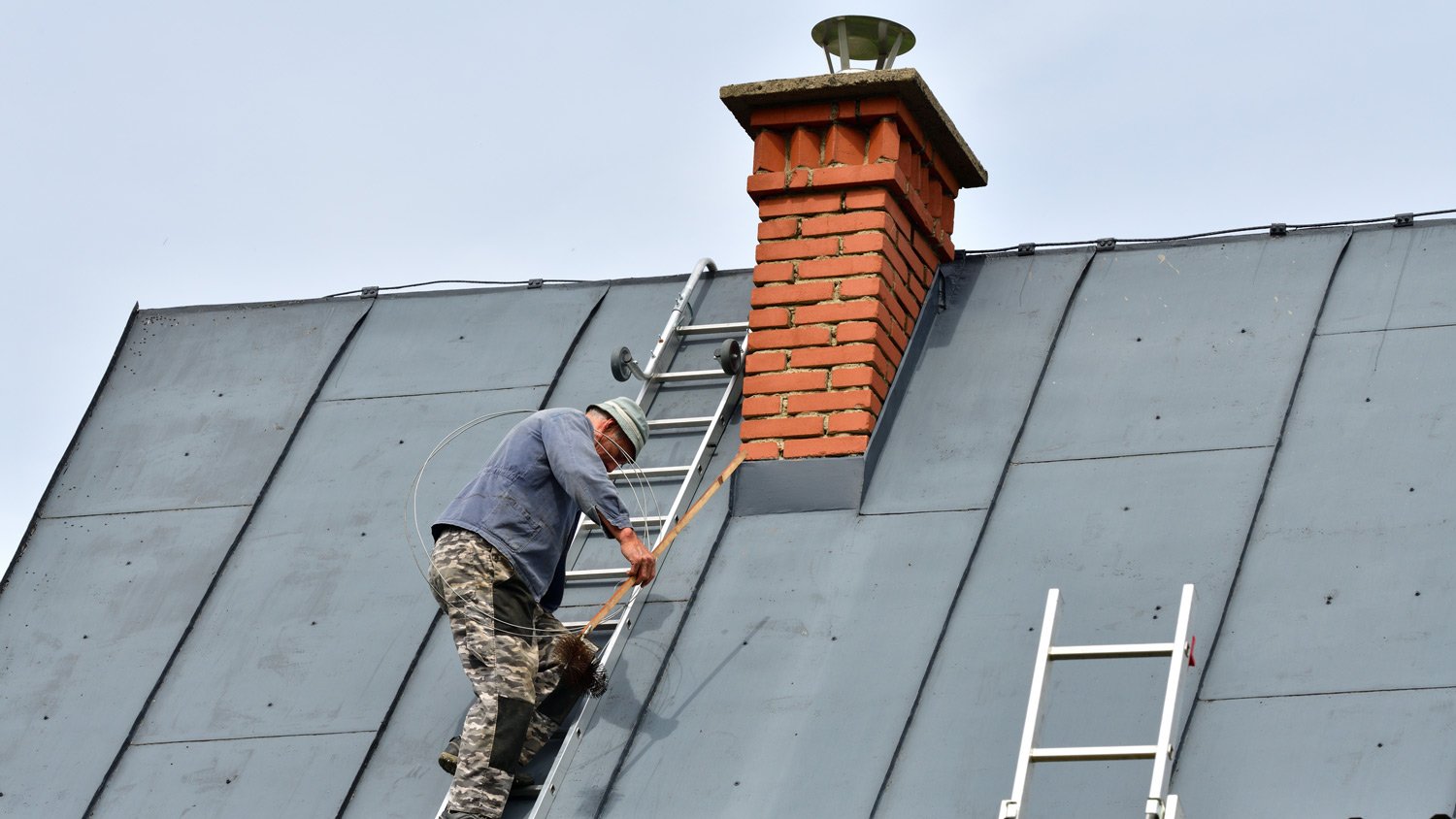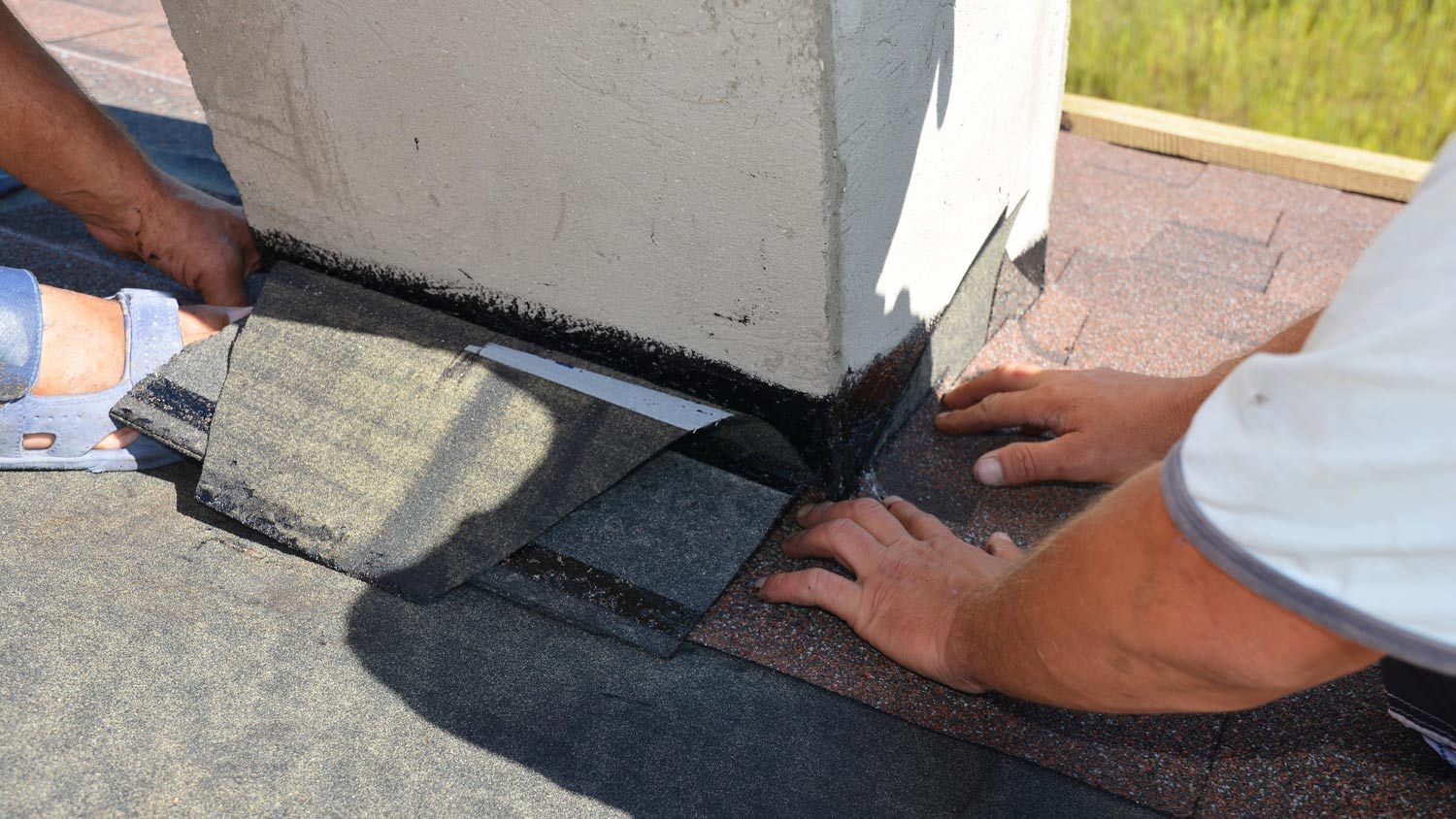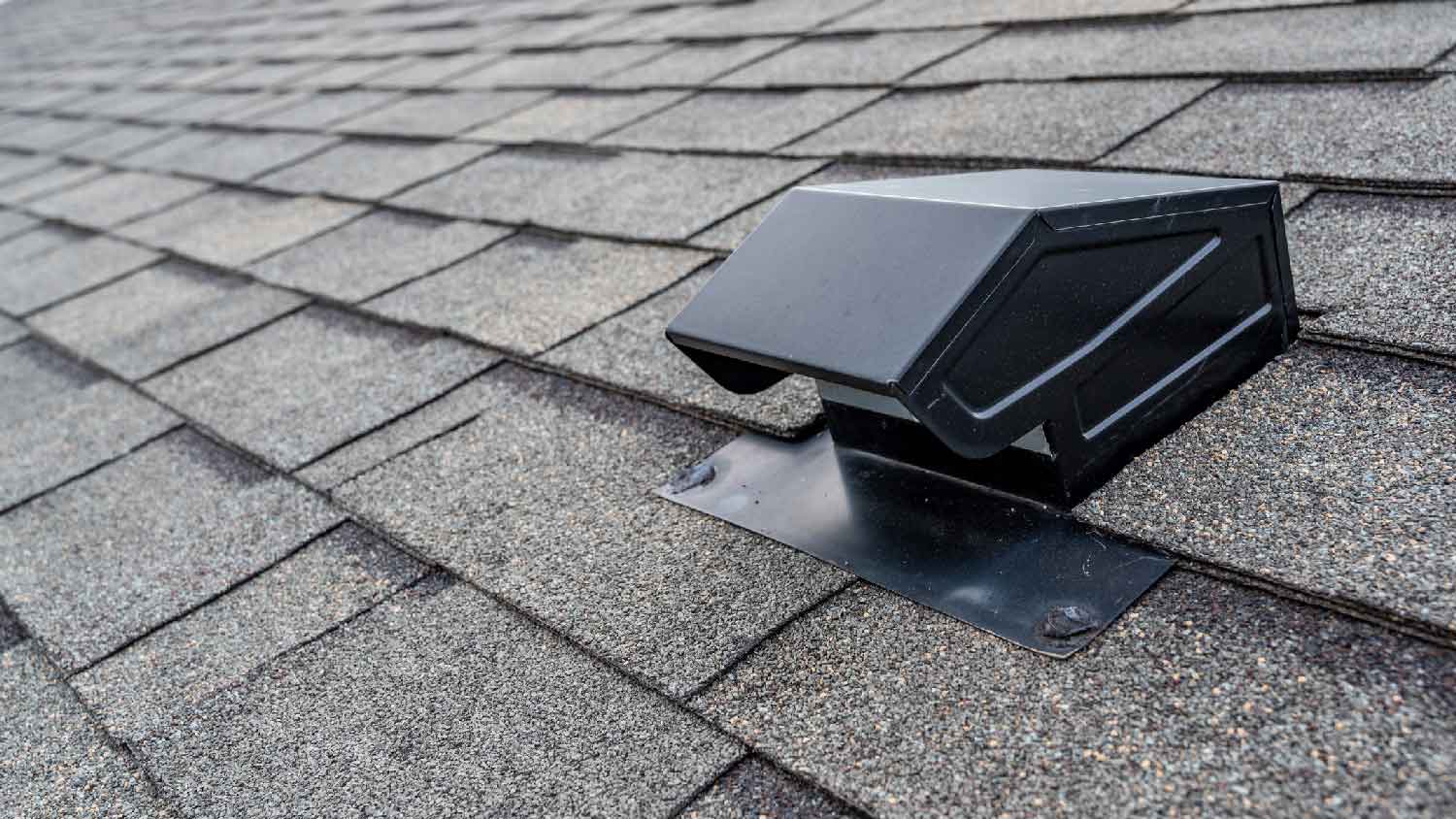
A new metal roof can add a unique touch to your home’s curb appeal and help maximize efficiency. Learn about metal roof costs and what affects your total.
This small barrier has a big impact


If your chimney leaks, the culprit might be faulty flashing—the metal barrier installed where the chimney meets the roof. When flashing deteriorates, water can easily penetrate your chimney and even your roof, causing structural damage to your adobe. So, who fixes chimney flashing? Let's review the specific expertise required to ensure your chimney is leak-free.

Since flashing is an integral part of your roof's waterproofing system, a local roof repair specialist is the best person to inspect it, identify any leaks or damage, and replace or repair the flashing if needed.
Roofers understand how to integrate the flashing into the rest of the roof structure, ensuring no gaps or areas prone to leaks. They also own specialized tools and have the technical know-how to devise solutions that will not compromise the integrity of the roof itself.
Additionally, they can handle various roof-related issues to protect your home if your chimney's flashing is not the root of the problem. They will address any issues to extend the life of your roof, including moisture buildup that often leads to mold.

It’s best to leave this project to the pros. While homeowners with some roofing experience may want to tackle the project, most lack the expertise to properly install flashing, which must be precisely fitted and sealed to prevent water leaks.
Safety is another huge concern—working on a roof near the chimney involves a significant risk of falls, especially without proper safety equipment. For most homeowners, hiring a professional roofer ensures long-term protection against leaks and structural damage, often saving money in the long run.
If your flashing issue directly links to the chimney's structure, a local chimney repair specialist with masonry experience is a great choice. These professionals are experts in brick, mortar, and stonework and can repair any structural damage that may affect the chimney and the flashing.
As with everything in your home, chimneys are prone to wear and tear over time and cracked bricks or loose mortar can lead to flashing problems. Chimney specialists can address structural damage before re-installing the flashing for long-lasting protection.

When fixing chimney flashing, professionals follow a systematic process to ensure a long-lasting, watertight seal. First, they inspect the existing flashing for signs of wear, such as rust, cracks, or gaps where water can seep through. If the flashing is beyond repair, they’ll remove the old metal and any caulking or roofing cement around it.
Next, the pro will cut and shape new flashing pieces from a sheet of metal—typically aluminum, copper, or galvanized steel—ensuring each piece fits snugly around the chimney and against the roof. They install the metal in vertical layers fitting into the roofline and chimney’s mortar joints, overlapping the base flashing to direct water away.
The finishing touches include applying roofing cement and the best caulk for chimney flashing to keep it in place and prevent leaking.
From average costs to expert advice, get all the answers you need to get your job done.

A new metal roof can add a unique touch to your home’s curb appeal and help maximize efficiency. Learn about metal roof costs and what affects your total.

If your metal roof needs a repair, it’s best to hire a roofing professional to handle it safely. Stay tuned to learn about cost factors for metal roof repair.

The cost to replace roof vent boots depends on a few factors, like the size of the vent, its location, and your existing roof material.

What's a cupola? Is it possible to have one on my home? What do they look like? Learn all about the variety of cupolas you can add to your home or barn.

A new or replacement attic fan will help your home stay well-ventilated and cool. If you're sold on the idea, learn how to install an attic fan in this guide.

This guide lays out the cost to install a roof vent on your home depending on the type of ventilation that's best for your roof based on several factors.